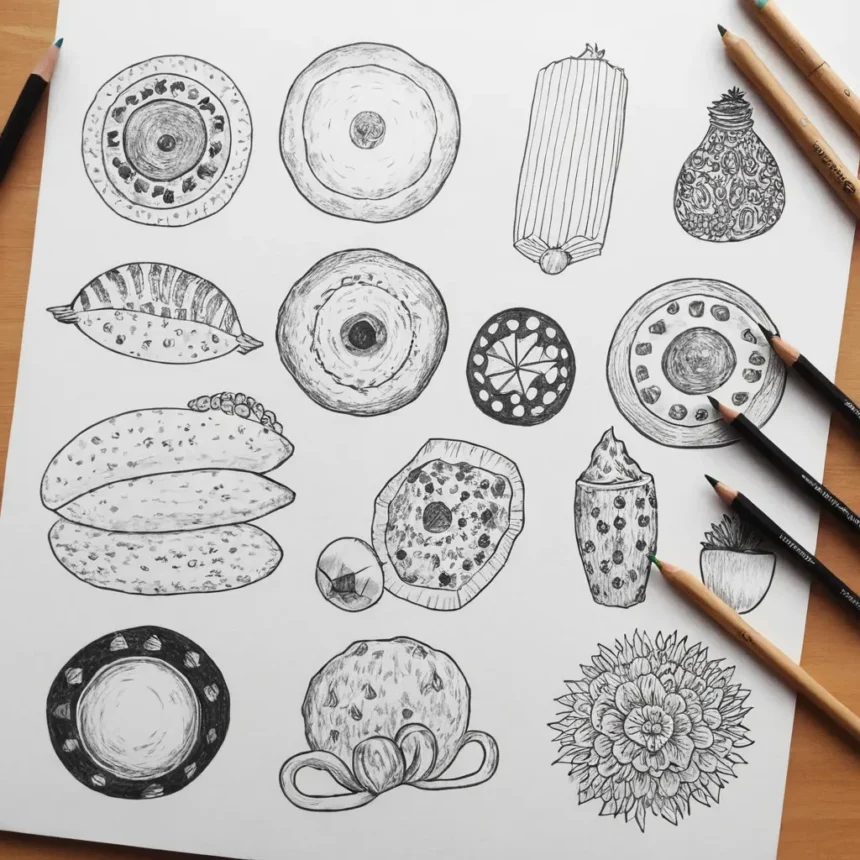Drawing is an incredible way to express yourself, relieve stress, and even improve your cognitive skills. Whether you’re a seasoned artist or just picking up a pencil for the first time, finding the right subject to draw can sometimes be a challenge. In this comprehensive guide, we’ll explore various things to draw, including easy ideas for beginners, creative prompts for the experienced, and unique subjects that will inspire you to unleash your inner artist.
1. Why Drawing Matters
Before diving into the specific things to draw, let’s take a moment to appreciate why drawing is important. Drawing can serve multiple purposes:
- Emotional Expression: Art allows individuals to convey feelings and emotions in a way that words often cannot.
- Stress Relief: Engaging in art can be therapeutic, helping to lower stress and anxiety levels.
- Cognitive Development: Drawing encourages critical thinking and improves problem-solving skills.
By understanding these benefits, you can better appreciate the importance of finding the right things to draw that resonate with you.
2. Easy Things to Draw for Beginners
If you’re just starting your drawing journey, here are some easy things to draw that can help build your confidence:
A. Basic Shapes
- Circles: Perfect your circle drawing for a solid foundation.
- Squares and Rectangles: Great for learning perspective.
- Triangles: Play with different sizes and angles.
B. Nature Elements
- Trees: Simple to sketch and great for practicing shapes and lines.
- Flowers: Start with basic petals and work up to more complex forms.
- Mountains: Use triangular shapes to create a range of landscapes.
C. Everyday Objects
- Fruits: Apples and bananas are great starters.
- Household Items: Draw your favorite mug or chair.
- Animals: Start with simple outlines like fish or birds.
3. Creative Drawing Ideas for All Levels
Once you’ve mastered some basics, you can explore more creative things to draw that challenge your skills and spark your imagination.
A. Abstract Art
- Geometric Patterns: Experiment with shapes and colors.
- Swirls and Waves: Use flowing lines to create dynamic movement.
- Color Blending: Combine colors to produce unique effects.
B. Portraits
- Self-Portraits: Use a mirror to capture your likeness.
- Friends and Family: Draw loved ones to practice facial features.
- Famous Figures: Challenge yourself with iconic personalities.
C. Fantasy Creatures
- Dragons: Let your imagination run wild with scales and wings.
- Unicorns: Create a whimsical take on this mythical beast.
- Aliens: Invent extraterrestrial beings with unique features.
4. Unique and Fun Subjects to Draw
For those looking to break away from the traditional, here are some unique things to draw that can add excitement to your art sessions:
A. Food Art
- Desserts: Capture the beauty of cakes, cookies, and pastries.
- International Cuisine: Explore different cultures through their dishes.
- Food Combinations: Create imaginary dishes by combining different foods.
B. Everyday Life Scenes
- Cafes and Restaurants: Sketch the ambiance of your favorite spot.
- Public Transport: Capture the hustle and bustle of a bus or train station.
- Street Performers: Draw musicians or artists sharing their talents.
C. Travel Inspirations
- Landmarks: Recreate iconic structures like the Eiffel Tower or the Great Wall.
- Street Views: Illustrate scenes from your travels.
- Cultural Festivals: Document vibrant events through your sketches.
5. Drawing Prompts to Spark Your Imagination
If you ever feel stuck or uninspired, drawing prompts can be a fantastic way to get back on track. Here are some fun things to draw prompts:
- “Draw your favorite memory.”
- “Illustrate a dream you had.”
- “Create a comic strip about your day.”
- “Design your ideal pet.”
- “Draw something from your favorite book or movie.”
6. Techniques to Enhance Your Drawing Skills
Regardless of the subjects you choose to draw, practicing various techniques can greatly improve your skills. Here are some methods to consider:
A. Shading Techniques
- Hatching: Create depth by drawing parallel lines.
- Cross-Hatching: Use intersecting lines for a richer texture.
- Blending: Smooth transitions between light and dark areas.
B. Perspective Drawing
- One-Point Perspective: Learn to draw scenes with a single vanishing point.
- Two-Point Perspective: Enhance your ability to depict more complex spaces.
- Atmospheric Perspective: Create depth through color and clarity.
C. Experimenting with Mediums
- Pencil: Start with simple graphite for detailed sketches.
- Ink: Try using pens for bold, definitive lines.
- Watercolor: Add a splash of color to your creations.
Conclusion
Drawing is not only an enjoyable pastime; it’s also a way to express yourself and explore your creativity. By experimenting with different things to draw, you can find subjects that inspire and challenge you. Remember to embrace the journey and not just the final result. Your unique style will develop with practice and exploration, so pick up that pencil and start creating!
FAQs
Q1: What are some easy things to draw for beginners?
A1: Beginners can start with basic shapes, nature elements like trees and flowers, and everyday objects such as fruits and household items.
Q2: How can I find inspiration for drawing?
A2: Inspiration can be found in nature, everyday life, or even through drawing prompts that challenge your creativity.
Q3: What techniques should I practice to improve my drawing skills?
A3: Focus on shading techniques, perspective drawing, and experimenting with various mediums to enhance your skills.
Q4: Can drawing help relieve stress?
A4: Yes! Engaging in drawing can be therapeutic and help lower stress levels, making it a great way to unwind.
Q5: What if I don’t have any ideas for things to draw?
A5: Use drawing prompts, look at photographs, or find inspiration in art communities online to spark your creativity.








